Problems with gallstones. Gallstones in Children: Symptoms, Causes, and Treatment Options
What are gallstones and how do they form in children. How are gallstones diagnosed and treated in pediatric patients. What are the risk factors for gallstone formation in young individuals. How can gallstone complications be prevented in children.
Understanding Gallstones: Formation and Composition
Gallstones are small, stone-like objects that form when the liquid in the gallbladder hardens. This liquid, called bile, plays a crucial role in helping the body digest fats. The liver produces bile, which is then stored in the gallbladder until needed. When the body requires bile for digestion, the gallbladder contracts and releases it into the intestines.
The composition of gallstones can vary, but they typically consist of:
- Cholesterol (most common)
- Bilirubin
- Calcium salts
- Bile acids
While gallstones are more prevalent in adults, they can also affect children. Understanding the underlying causes and risk factors is essential for proper diagnosis and treatment.

The Biliary System: A Complex Network
The biliary system is a network of tubes connecting the liver, gallbladder, and intestines. This intricate system includes:
- Hepatic ducts: Tubes leaving the liver
- Cystic duct: Tube leaving the gallbladder
- Common bile duct: Formed by the combination of hepatic and cystic ducts, leading to the intestines
When gallstones obstruct these ducts, they can impede the flow of bile, potentially causing swelling, inflammation, and even organ damage.
Risk Factors for Gallstone Formation in Children
While gallstones are less common in children compared to adults, certain factors can increase the likelihood of their development:
- Inherited blood disorders (e.g., sickle cell disease, spherocytosis)
- Obesity
- Family history of gallstones
- Certain medications
- Rapid weight loss
- Prolonged fasting
- Total parenteral nutrition (TPN)
Are some children more susceptible to gallstones than others? Yes, children with underlying medical conditions, particularly those affecting red blood cells or metabolism, may have a higher risk of developing gallstones. Additionally, lifestyle factors such as diet and physical activity can play a role in gallstone formation.

Recognizing Gallstone Symptoms in Pediatric Patients
Gallstone symptoms in children can be challenging to identify, especially in younger patients who may struggle to articulate their discomfort. However, certain signs can indicate the presence of gallstones:
- Sudden, severe pain in the upper abdomen
- Pain lasting at least 30 minutes, sometimes up to several hours
- Discomfort centered in the upper right side of the belly
- Nausea and vomiting
- Fever
- Jaundice (yellowing of the skin and eyes)
How can parents differentiate between gallstone pain and other abdominal discomfort in children? Gallstone pain typically comes on suddenly and intensifies over time. It often occurs after meals, particularly those high in fat. The pain may also radiate to the back or between the shoulder blades.
Age-Specific Symptom Presentation
Children of different ages may express gallstone symptoms differently:
- Young children (under 9-10 years): May have difficulty pinpointing the exact location of pain
- Older children and adolescents: May describe pain more precisely, including its nature (sharp, cramping, or dull) and location
Parents should be attentive to any recurring abdominal pain, especially if it’s associated with other symptoms like nausea or fever.
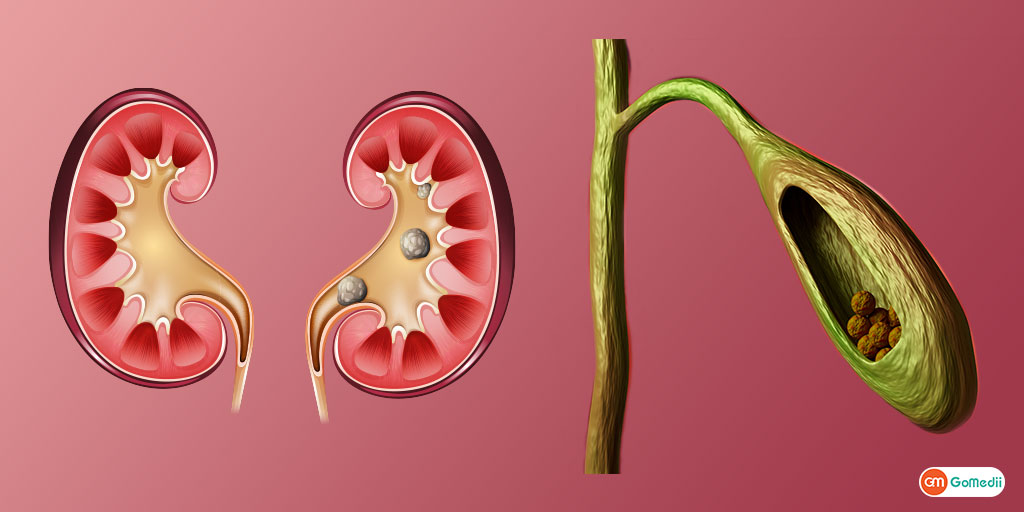
Diagnostic Approaches for Pediatric Gallstones
Accurate diagnosis of gallstones in children is crucial for appropriate treatment. Healthcare providers employ various diagnostic techniques to identify and assess gallstones:
Ultrasound Examination
Ultrasound is often the first-line diagnostic tool for gallstones. This non-invasive imaging technique uses sound waves to create images of the gallbladder and surrounding structures. It can effectively detect the presence of gallstones and evaluate the condition of the gallbladder.
Advanced Imaging Techniques
In some cases, additional imaging studies may be necessary to obtain a comprehensive view of the biliary system:
- Abdominal X-ray: Can detect calcified gallstones
- Cholescintigraphy (HIDA scan): Assesses gallbladder function and detects blockages
- ERCP (Endoscopic Retrograde Cholangiopancreatography): Allows for both diagnosis and potential treatment of gallstones in the bile ducts
- MRCP (Magnetic Resonance Cholangiopancreatography): Provides detailed images of the biliary and pancreatic ducts
How do doctors determine which diagnostic tests are most appropriate for a child with suspected gallstones? The choice of diagnostic tools depends on the child’s age, symptoms, and overall health status. Doctors typically start with non-invasive methods like ultrasound before progressing to more advanced techniques if necessary.

Treatment Options for Pediatric Gallstone Cases
The treatment of gallstones in children depends on the severity of symptoms and the presence of complications. Options may include:
Conservative Management
For asymptomatic gallstones or mild cases, doctors may recommend:
- Dietary modifications (low-fat diet)
- Increased fluid intake
- Pain management
- Regular monitoring
Surgical Intervention
In cases of recurrent or severe symptoms, surgical removal of the gallbladder (cholecystectomy) may be necessary. The most common procedure is laparoscopic cholecystectomy, which offers several advantages:
- Minimally invasive
- Shorter recovery time
- Reduced post-operative pain
- Smaller scars
When is surgery recommended for children with gallstones? Surgery is typically considered when gallstones cause frequent or severe symptoms, complications arise, or there’s a high risk of future problems. The decision to operate is made on a case-by-case basis, considering the child’s overall health and the potential benefits and risks of surgery.

Preventing Gallstone Complications in Children
While not all gallstones can be prevented, certain measures can help reduce the risk of complications:
- Maintaining a healthy weight through proper diet and exercise
- Avoiding rapid weight loss or extreme dieting
- Encouraging regular physical activity
- Staying well-hydrated
- Managing underlying medical conditions effectively
How can parents help their children maintain good gallbladder health? Promoting a balanced diet rich in fruits, vegetables, and whole grains while limiting excessive fat intake can support overall digestive health. Additionally, encouraging regular physical activity and maintaining a healthy weight can reduce the risk of gallstone formation.
Long-term Outlook for Children with Gallstones
The prognosis for children with gallstones is generally favorable, especially when diagnosed and treated promptly. Most children who undergo gallbladder removal adapt well and experience minimal long-term effects. However, ongoing medical follow-up is essential to monitor for any potential complications or recurrence of symptoms.

What lifestyle adjustments may be necessary for children after gallbladder removal? While most children can return to normal activities after recovery, some may need to make minor dietary changes, such as avoiding very fatty or greasy foods. Regular check-ups with a pediatric gastroenterologist can help ensure optimal digestive health and address any concerns that may arise.
Advancements in Pediatric Gallstone Management
Research in pediatric gallstone management continues to evolve, focusing on improving diagnostic accuracy, minimizing invasive procedures, and developing targeted therapies. Some areas of ongoing research include:
- Novel imaging techniques for early detection
- Genetic markers associated with gallstone formation
- Non-surgical interventions for stone dissolution
- Improvements in laparoscopic and robotic surgical techniques
How might future advancements impact the treatment of gallstones in children? As our understanding of gallstone formation in pediatric patients grows, we may see more personalized treatment approaches tailored to each child’s specific risk factors and genetic profile. This could lead to more effective prevention strategies and less invasive treatment options in the future.
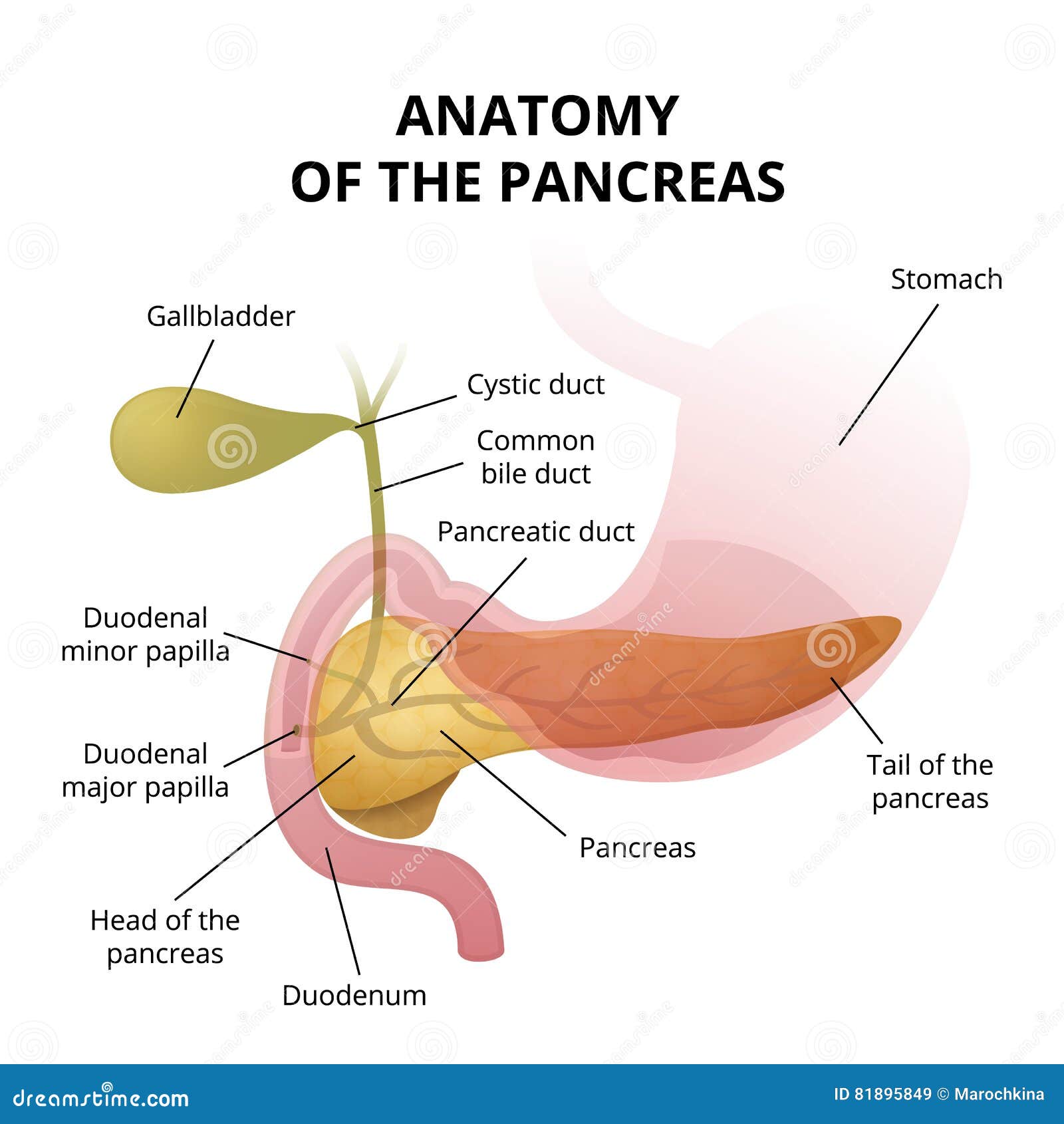
In conclusion, while gallstones in children are less common than in adults, they can still cause significant health issues if left untreated. Early recognition of symptoms, accurate diagnosis, and appropriate treatment are crucial for managing this condition effectively in pediatric patients. By staying informed about the latest developments in gallstone management and maintaining open communication with healthcare providers, parents can help ensure the best possible outcomes for their children facing this challenging condition.
Gallstones – Seattle Children’s
What are gallstones?
Gallstones are small, stone-like objects that form when the liquid in the gallbladder hardens. This liquid is called bile. It helps the body digest fats.
The liver makes bile, and the gallbladder stores it until the body needs it. Then the gallbladder contracts and squeezes bile out into the intestines. A series of tubes connects the liver, gallbladder and intestines. The tubes leaving the liver are called the hepatic ducts. The tube leaving the gallbladder is called the cystic duct. They combine to form the common bile duct, which goes to the intestines.
Bile contains water and several solids: cholesterol, fats, salts and proteins. It also contains bilirubin, a yellowish pigment. Usually gallstones are made mostly of cholesterol. Some are made of bilirubin.
If gallstones get lodged in a duct, they can block the flow of bile. This can cause the duct or the gallbladder to swell. Ongoing blockage can damage the liver, the gallbladder or the pancreas. Blockage can lead to infection, too. Organ damage and infection can be serious problems.
Blockage can lead to infection, too. Organ damage and infection can be serious problems.
Gallstones in children
Gallstones are not as common in children as they are in adults. But some children do get gallstones. Most often, there is no specific underlying cause for gallstones in children. But some factors can put kids at increased risk for them:
- Having certain inherited blood problems, such as sickle cell disease or spherocytosis
- Being obese
- Having a family history of gallstones
- Taking certain medicines
Gallstones at Seattle Children’s
-
We have treated many children with gallstones at Seattle Children’s. Our surgeons have extensive experience in performing the most common operation to remove the gallbladder, called laparoscopic cholecystectomy (pronounced koh-leh-sist-EKT-uh-mee). We also have extensive experience in dealing with the possible complications of gallstone disease, such as problems with the liver or pancreas.

-
When you come to Seattle Children’s, you have a team of people to care for your child before, during and after surgery. Along with your child’s surgeon, you are connected with nurses, dietitians, child life specialists and others. We work together to meet all of your child’s health needs and help your family through this experience.
-
Since 1907, Seattle Children’s has been treating children only. Our team members are trained in their fields and also in meeting the unique needs of children. For example, the doctors who give your child anesthesia are board certified in pediatric anesthesiology. This means they have extra years of training in how to take care of kids. Our child life specialists know how to help children understand their illnesses and treatments in ways that make sense for their age.
Symptoms of Gallstones
Sometimes gallstones form, but cause no symptoms.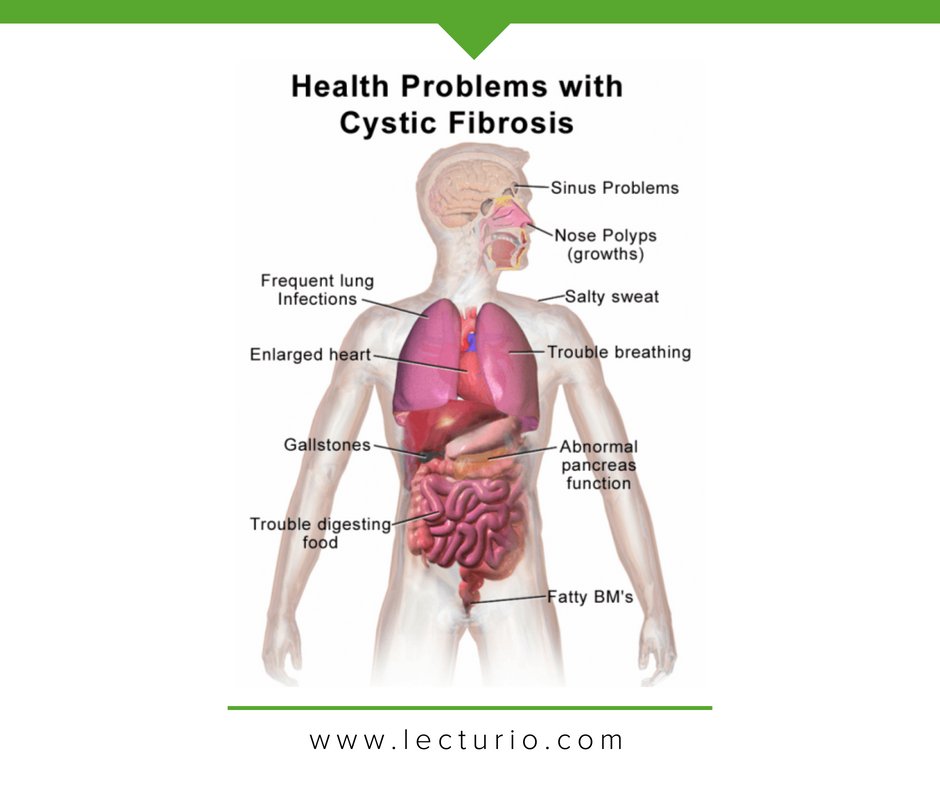 When gallstones do cause symptoms, the symptoms tend to come on suddenly.
When gallstones do cause symptoms, the symptoms tend to come on suddenly.
-
The most common symptom is pain in the upper belly (abdomen). This pain gets worse and lasts for at least 30 minutes. It may last for as long as a few hours. Your child may feel that the pain is centered on the upper right side of the belly.
It is difficult for most children younger than about 9 or 10 years old to pinpoint their pain. They may seem vague about where they hurt. But some older children or young adults may describe their pain as:
- Centering in the right upper or middle upper belly
- Spreading to the back or between the shoulder blades
- Feeling sharp, cramping or dull
- Going away, then coming back again (recurrent)
- Happening just after eating a meal
- Getting worse after eating fatty or greasy foods
-
If a gallstone blocks a duct, your child may also have some or all of these symptoms:
- Nausea
- Vomiting
- Fever
- Jaundice, a yellowish tint to the skin and eyes
Diagnosing Gallstones
Ultrasound exam
Doctors often diagnose gallstones using ultrasound exams. An ultrasound machine emits sound waves that bounce off the gallbladder and other organs to form a picture on a video monitor. The doctor can look for gallstones in this picture.
An ultrasound machine emits sound waves that bounce off the gallbladder and other organs to form a picture on a video monitor. The doctor can look for gallstones in this picture.
Other body imaging
Sometimes doctors use other imaging techniques to look for gallstones or blocked ducts, or to check how well the gallbladder is working. Your child’s doctor may ask your child to have:
- An abdominal X-ray
- A cholescintigraphy (pronounced koe-leh-skin-TIG-ruh-fee), or HIDA scan, which lets doctors see how well your child’s gallbladder contracts
- An ERCP (endoscopic retrograde cholangiopancreatography, pronounced koe-LAN-jee-oh-PAN-kree-ah-TOG-rah-fee), which helps doctors find and remove gallstones in the bile ducts
- An MRCP (magnetic resonance cholangiopancreatography), a type of MRI (magnetic resonance imaging) that takes detailed pictures of bile and the biliary tract
Lab work
Your child may need blood tests, too. Blood tests may show signs of infection, obstruction, jaundice or other problems related to gallstones.
Treating Gallstones
If your child’s gallstones don’t cause symptoms, treatment may not be needed. If they do, your child will need surgery to remove the gallbladder. This surgery is called cholecystectomy.
It’s OK not to have a gallbladder. If your child doesn’t have a gallbladder, the bile will simply flow from the liver directly into the intestine. Your child should be able to eat normally and continue with normal activities after having the gallbladder removed. The most common symptom after removing the gallbladder is loose stool, especially after eating a fatty meal. Most children do not have this problem.
-
At the time of surgery, we will give your child medicine to make them sleep without pain during the operation (general anesthesia). Removing the gallbladder takes about 1 to 2 hours. Your child will be in the recovery room for another hour.
Less invasive surgery
In most cases, surgeons can remove the gallbladder using laparoscopic surgery, also called minimally invasive surgery.
 This means they make several small cuts (incisions) in the belly instead of one large incision (open surgery). Surgeons insert a thin, lighted tube with a camera and their surgical instruments through these small incisions. Then they snip the gallbladder free and remove it through one of the openings.
This means they make several small cuts (incisions) in the belly instead of one large incision (open surgery). Surgeons insert a thin, lighted tube with a camera and their surgical instruments through these small incisions. Then they snip the gallbladder free and remove it through one of the openings.The advantage of laparoscopic surgery is that surgeons don’t have to cut through the stomach muscles. Children recover faster.
Open surgery
On rare occasions, children need to have open surgery (one large incision) instead of laparoscopic surgery. This may be the case if your child has had other abdominal operations in the past. If so, your child’s surgeon will discuss it with you.
-
During the gallbladder removal operation, the surgeon may perform a cholangiogram, a study of the bile ducts. This study is not always necessary, but it helps doctors make sure that gallstones have not fallen out of the gallbladder and into the main bile duct.
 If the study does show gallstones in the main bile duct, the surgeon will try to remove them. Because the bile ducts of children are usually very small, this can be very difficult to do using laparoscopic techniques.
If the study does show gallstones in the main bile duct, the surgeon will try to remove them. Because the bile ducts of children are usually very small, this can be very difficult to do using laparoscopic techniques.Removing gallstones outside the gallbladder
In some cases, a child may need an ERCP (endoscopic retrograde cholangiopancreatography, pronounced koe-LAN-jee-oh-PAN-kree-ah-TOG-rah-fee) to remove gallstones that have fallen out of the gallbladder. In an ERCP, the surgeon passes a lighted scope through the child’s mouth, past the stomach and into the upper small intestine (duodenum). This way, the doctor can see the bile duct entering the intestine. Small instruments can be passed through the scope and used to remove the gallstones. An ERCP often helps doctors avoid doing a larger operation on your child. If your child needs an ERCP, it most likely will be done on a different day from the gallbladder removal surgery.
-
After laparoscopic surgery, you can expect your child to stay in the hospital for 1 to 2 days.
 Once your child is home, you may need to limit activity for several days.
Once your child is home, you may need to limit activity for several days.After open surgery, you can expect your child to stay in the hospital for 2 to 7 days. You may need to limit your child’s activity for several weeks while they recover.
In either case, we will give your child pain medicine to make them comfortable. You’ll need to keep the incisions clean and dry until they heal. The surgery team will teach you how to do this and tell you about any activity limits.
About 2 to 3 weeks after surgery, your child will need to see the surgeon for a follow-up visit. The surgeon will make sure the incision is healing and your child is recovering well.
Gallstones | Symptoms, Causes & Treatment
Overview
This factsheet is about gallstones
Gall is an old-fashioned word for bile, a liquid made in the liver and stored in the gallbladder. The gallbladder is a small pouch that sits just under the liver. It has the shape of a pear and is about 9 cm long by 4.5 cm wide in size when full. The gallbladder is for storing bile between meals. It fills with bile from the liver between meals, and when we eat the gallbladder empties the bile along a tube (called the cystic duct) into the main bile duct. The bile duct carries bile to the first part of the small bowel immediately after the stomach. Once there, the bile mixes with the food that we have eaten. Bile helps with digestion and absorption, especially of the fats in the food. Gallstones are small, solid lumps that form in bile. They usually cause no symptoms and most people with gallstones are unaware that they have them. However, in some people they can cause problems.
It has the shape of a pear and is about 9 cm long by 4.5 cm wide in size when full. The gallbladder is for storing bile between meals. It fills with bile from the liver between meals, and when we eat the gallbladder empties the bile along a tube (called the cystic duct) into the main bile duct. The bile duct carries bile to the first part of the small bowel immediately after the stomach. Once there, the bile mixes with the food that we have eaten. Bile helps with digestion and absorption, especially of the fats in the food. Gallstones are small, solid lumps that form in bile. They usually cause no symptoms and most people with gallstones are unaware that they have them. However, in some people they can cause problems.
Gallstones affect 10 to 15 people out of every 100 but not everyone will have symptoms. Gallstones are three times more common in women than men. Gallstones happen more often in the gallbladder of females who have an unhealthy high body weight and who have had children. The number of younger females and teenagers who have gallstones is increasing. It is suspected that this is due to changes in the type of diet eaten. Nearly a quarter of females (and a smaller proportion of males) suffer symptoms from gallstones by the age of 60. The risk of developing symptoms increases with age.
The number of younger females and teenagers who have gallstones is increasing. It is suspected that this is due to changes in the type of diet eaten. Nearly a quarter of females (and a smaller proportion of males) suffer symptoms from gallstones by the age of 60. The risk of developing symptoms increases with age.
Causes
How do gallstones occur?
Bile is made up of a mixture of different chemicals. Gallstones form when bile becomes so concentrated that the chemicals can no longer stay dissolved. Gallstones begin as tiny crystals, grow to resemble gravel, and can eventually grow to the size of pebbles. The crystals form as the proportion of substances in liquid bile changes. There are two types of gallstones.
The first type of gallstones is formed from cholesterol and is more common. Bile is high in cholesterol, a fatty substance that is important for health but when present in excess can cause heart disease. In fact, bile is one way the body rids itself of excess cholesterol. Bile, on the other hand, may have so much cholesterol that when it is stored in the gallbladder, the cholesterol separates as small crystals. These crystals may combine to form a gallstone.
In fact, bile is one way the body rids itself of excess cholesterol. Bile, on the other hand, may have so much cholesterol that when it is stored in the gallbladder, the cholesterol separates as small crystals. These crystals may combine to form a gallstone.
Pigment stones, the second type of gallstone, are found in around 3 out of every 10 people with gallstones. Bilirubin, a waste product from the turnover of red blood cells is excreted by the liver into bile and under some circumstances can form pigment stones in the gallbladder. The type of stone that forms is determined by a person’s lifestyle, ethnicity, and medical history. Some gallstones can be mixed.
Sometimes, there is just a single stone in the gallbladder. But often there are several, and in rare cases there may be literally dozens of small stones. Although the size and quantity of stones typically do not determine whether a person will experience issues, they can determine which complications may occur (see below).
What are the causes?
There are many risk factors that have been linked to gallstone disease. Examples of this include becoming older, being a female, and having a close family member who has gallstones. Additionally, those people with inflammatory bowel disease or people who have undergone a period of fast weight loss of more than 1.5 kg each week, are more likely to develop gallstones. However, for people who are overweight the health advantages of weight loss far overweigh the risk of gallstones. Gallstones can also form in people who have had weight loss surgery. The risk is also higher with increasing waist measurement, which is an indicator of abdominal (tummy) fat, even among people who have a healthy weight.
People with the hereditary conditions sickle cell disease and hereditary spherocytosis have an increased risk of developing gallstones and in these conditions, gallstones may run in families.
Symptoms
What are the usual symptoms?
About two out of every three people who have gallstones have no symptoms and are usually unaware they have them. Gallstones are occasionally discovered by accident when investigating another condition, in which case they are usually not treated. Gallstones typically only cause symptoms if the gallbladder becomes inflamed or if the stones travel from the gallbladder into one of the bile ducts. The ducts connect the liver, gallbladder and small bowel. Possible complications include:
Gallstones are occasionally discovered by accident when investigating another condition, in which case they are usually not treated. Gallstones typically only cause symptoms if the gallbladder becomes inflamed or if the stones travel from the gallbladder into one of the bile ducts. The ducts connect the liver, gallbladder and small bowel. Possible complications include:
Biliary colic: If the gallstones get stuck in the narrow neck of the gallbladder or in the bile duct that drains the gallbladder, this can cause pain called biliary colic. The pain can be severe and is described as a cramping pain that is felt in the top of the stomach (belly). It is most usually felt either in the middle of, or just under the ribs on the right-hand side. The pain can go around to the back and to the right shoulder. It is generally a continuous pain but may come in waves. It is usually rather more severe than ‘indigestion’ and could be described as severe heartburn.
It is not uncommon for the person with gallstones to feel so uncomfortable that they may seek medical advice. The pain usually lasts for several minutes to a few hours. Occasionally, people with gallstone pain may feel sick or even vomit. The pain often follows a meal and may be noticed most often in the evenings. However, it may occur at any time. Biliary colic is the most common symptom of gallstones.
Cholecystitis: The stones may cause inflammation in the wall of the gallbladder, known as cholecystitis. This also causes pain like biliary colic, but it doesn’t go away without medical intervention. The area on the top right of the abdomen can also get very tender to touch. People can feel very sick and flu-like, and even develop sepsis (a widespread infection).
Jaundice (sometimes called yellow jaundice): Bilirubin is a yellow-green chemical that occurs normally in the body. If a gallstone blocks the main duct leading from the liver into the bowel, bilirubin can’t be removed from the body and a yellow colour can be seen in the eyes and skin. People with a darker complexion may find it more difficult to detect changes in skin colour. Bilirubin comes from red blood cells that have been processed at the end of their natural life. It is one of the body’s waste products that the liver deals with by mixing it with bile. Some pigment does escape into the urine, making it look a very dark colour, while poo can be very pale.
People with a darker complexion may find it more difficult to detect changes in skin colour. Bilirubin comes from red blood cells that have been processed at the end of their natural life. It is one of the body’s waste products that the liver deals with by mixing it with bile. Some pigment does escape into the urine, making it look a very dark colour, while poo can be very pale.
Cholangitis: If the stone doesn’t pass and remains stuck in the bile duct it can cause a serious condition called cholangitis which occurs when the blocked bile becomes infected. If this happens the person becomes feverish and often develops shivering. This is a medical emergency.
Diagnosis
HOW ARE GALLSTONES DIAGNOSED?
If a person complains of pains anywhere around the top of the belly (abdomen), especially if these pains have been lingering for a few hours at a time and coming and going in waves, the doctor may suspect gallstones.:max_bytes(150000):strip_icc()/gallbladder-disease-causes-5ae1f4ea04d1cf003cd13481.png) The presence of jaundice adds to the likelihood of gallstones and should always be checked out thoroughly. A visual check for signs of jaundice would be carried out, and often blood tests would be sent away. In addition, the doctor will carry out a physical examination to determine whether there is soreness at the top of the abdomen. If these findings point to a diagnosis of gallstones, it is usual for the person with symptoms to be referred for further investigations. These can include:
The presence of jaundice adds to the likelihood of gallstones and should always be checked out thoroughly. A visual check for signs of jaundice would be carried out, and often blood tests would be sent away. In addition, the doctor will carry out a physical examination to determine whether there is soreness at the top of the abdomen. If these findings point to a diagnosis of gallstones, it is usual for the person with symptoms to be referred for further investigations. These can include:
- Blood tests: These will be carried out to determine whether there are signs of jaundice or inflammation.
- Ultrasound scan: This is where a small flat device is moved over the upper belly (abdomen) in the region of the liver and gallbladder. Most gallstones reflect ultrasound very well. Unless they are deep in the abdomen or hidden behind some gas in the bowel, they are easily detected on the screen. It is important to not eat or drink before having this scan to make sure the gallbladder is as full of bile as possible.

- CT or MRI scan: If the ultrasound scan does not give a clear result, other tests may be needed such as a CT or MRI scan.
Treatment
WHAT TREATMENT IS AVAILABLE?
If the gallstones are not causing any symptoms, then it is not necessary to have any treatment at all. Even if you have one attack of pain from gallstones, there may be no further trouble for many years, if ever. Even if a gallstone has travelled out of the gallbladder down the bile duct, most will pass into the small bowel and be passed naturally. In effect, the person with gallstones has cured themselves of the problem.
If gallstones are causing recurring pain or have caused complications, then they can be removed. This is usually done by surgery to remove the gallbladder with the gallstones in it. Other techniques can be used to remove gallstones that have escaped from the gallbladder:
Surgery: If the gallstones are all contained in the gallbladder, then the simplest method is to have an operation to remove the gallbladder. This is called a called a cholecystectomy. Surgery also removes the stones within it. Nowadays, this is usually done via keyhole surgery (laparoscopic surgery), a procedure that most people can have done as a day case. This is a huge improvement from the much larger operations that were necessary for gallstones in the past. However, every operation carries risks and should not be entered into lightly. There is no question that, for most people, keyhole surgery is currently the best option for treating gallstones.
This is called a called a cholecystectomy. Surgery also removes the stones within it. Nowadays, this is usually done via keyhole surgery (laparoscopic surgery), a procedure that most people can have done as a day case. This is a huge improvement from the much larger operations that were necessary for gallstones in the past. However, every operation carries risks and should not be entered into lightly. There is no question that, for most people, keyhole surgery is currently the best option for treating gallstones.
Gallbladder surgery is generally considered safe and effective and causes no problems for most people who have it. However, you should always ask your surgeon about the benefits of surgery and risk of complications. Remember that any risks should be weighed up against the risks of not having surgery. A proportion of people (around 13 in 100) may develop diarrhoea after gallbladder surgery, and this may not come on until up to 3 months after the operation. Importantly, if diarrhoea persists, then people should be investigated for a condition bile acid diarrhoea (BAD). This is sometimes referred to as “bile acid malabsorption”. BAD is more frequently seen in young women and men over the age of 50. BAD is readily treatable if it is recognised so if you develop diarrhoea within 3 months of your operation make sure to discuss it with your doctor.
This is sometimes referred to as “bile acid malabsorption”. BAD is more frequently seen in young women and men over the age of 50. BAD is readily treatable if it is recognised so if you develop diarrhoea within 3 months of your operation make sure to discuss it with your doctor.
Surgery may very occasionally cause damage to the bile ducts (up to 1 in 200 chance) and rarely a stone may get stuck in the ducts during surgery (this happens in 1 in 100 people). Other rare complications include damage to the pancreas, (an organ that sits close to the gall bladder) resulting in pancreatitis; infection; and bleeding. Any symptoms after surgery should therefore be reported to your doctor.
It should be remembered that most surgical complications are a rare occurrence.
Endoscopic Retrograde Cholangio-Pancreatography (ERCP): This is where stones in the bile duct are removed with a flexible endoscope. With ERCP, the endoscope is passed through the mouth, down to the stomach, to reach the opening of the bile duct into the bowel. A tiny tube is then passed through the endoscope and inserted into the lower end of the bile duct. Initially, a dye is squirted through this tube so that an x-ray picture of the duct can then be taken. This is called a cholangiogram. If the cholangiogram confirms the presence of a stone in the duct, this can either be removed directly or the bottom end of the duct can be enlarged to allow the stone to pass out naturally. Alternatively, small drainage tubes (stents) may be inserted around the stones to allow the bile to flow freely again. These techniques mean that an operation can be avoided. This is useful for frailer people with gallstones in the bile duct, who may not be able to have surgery. ERCP has a small risk of quite serious complications, including pancreatitis (around 1 in 50) and serious bleeding (around 1 in 100), so it should be carefully considered.
A tiny tube is then passed through the endoscope and inserted into the lower end of the bile duct. Initially, a dye is squirted through this tube so that an x-ray picture of the duct can then be taken. This is called a cholangiogram. If the cholangiogram confirms the presence of a stone in the duct, this can either be removed directly or the bottom end of the duct can be enlarged to allow the stone to pass out naturally. Alternatively, small drainage tubes (stents) may be inserted around the stones to allow the bile to flow freely again. These techniques mean that an operation can be avoided. This is useful for frailer people with gallstones in the bile duct, who may not be able to have surgery. ERCP has a small risk of quite serious complications, including pancreatitis (around 1 in 50) and serious bleeding (around 1 in 100), so it should be carefully considered.
Shock Waves: At some specialist centres, large gallstones that are otherwise difficult to treat can be broken up by using shock waves.
Abscess caused by an infection in the gallbladder (gallbladder empyema).
This is a build-up of pus that occasionally happens with a blocked gallbladder. If symptoms do not settle and surgery cannot take place, the pus would need to be drained. It is done by inserting a tube through the skin to where the infection is (percutaneous cholecystostomy). Once the infection settles, then surgery or endoscopy treatment may be considered.
Do gallstones need to be monitored, and if so, how?
There is some variation in the treatment of gallstones. Some people are offered treatment for symptomless gallstones to prevent problems in the future. This is especially the case if they have had acute pancreatitis caused by gallstones. Other people can be safely helped by a watch-and-wait approach. When people have symptoms, they should be offered treatment, so please contact your GP if symptoms occur. While waiting for treatment, it is advisable to avoid any foods that cause symptoms. Dietary tolerance varies between individuals, and sometimes having smaller meals more regularly through the day can be helpful. There is no research to suggest that either gluten free or dairy free diets are helpful for gallstone symptoms, so these diets won’t help. If you lose weight or struggle to eat, please contact your GP immediately.
Dietary tolerance varies between individuals, and sometimes having smaller meals more regularly through the day can be helpful. There is no research to suggest that either gluten free or dairy free diets are helpful for gallstone symptoms, so these diets won’t help. If you lose weight or struggle to eat, please contact your GP immediately.
What about after gallbladder removal?
The operation to remove the gallbladder is extremely common, with more than 60,000 performed on the NHS every year. The gallbladder, while useful, is not essential to the body. Its removal should raise no problems and you can live perfectly well without a gallbladder. If there is no gallbladder, bile just passes continuously into the bowel, rather than being stored between meals. There is no problem with digestion, and most people do not have any longer-term after-effects from having their gallbladder removed. However, in some people their original symptoms persist or recur after treatment. If this is the case, it is quite possible that the original symptoms were not due to the gallstones.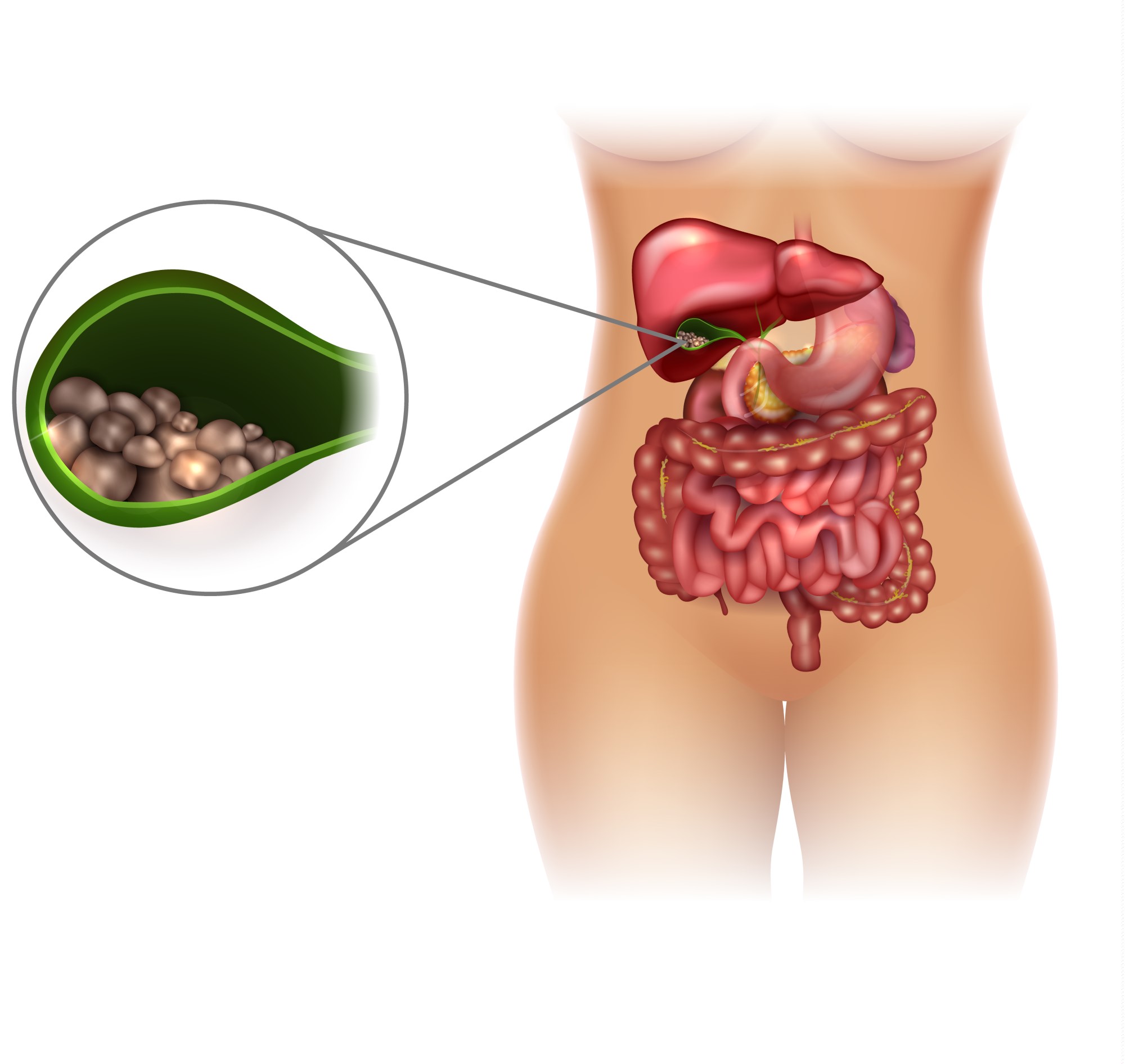
Ordinarily, if you have no symptoms, there is no need to continue to alter your diet after treatment. You may see information on the Internet suggesting that having the gallbladder removed causes a low level of bile. This is not correct; the liver produces the same level of bile as it did before the surgery. Bile supplements are therefore not needed.
If you have continuing symptoms, then these should be reported to your GP so the cause can be identified, and treatment offered. It is important to consider testing for bile acid diarrhoea, if diarrhoea is a symptom. Sometimes other conditions, such as irritable bowel syndrome (IBS) can cause pains that seem to be coming from the gallbladder, and these symptoms will not improve after a cholecystectomy. However, there are treatments available for IBS if it is diagnosed.
It is important to note that people who are at high risk of stone formation may, after some time, develop further stones in the bile ducts. They will potentially suffer symptoms again. If this happens the person with gallstones is usually offered an ERCP.
They will potentially suffer symptoms again. If this happens the person with gallstones is usually offered an ERCP.
Support
What to ask your doctor?
- I am getting stomach pains – have I got gallstones?
- I think I have gallstones, what should I do?
- Will diagnosis be uncomfortable for me?
- Are gallstones dangerous?
- What are the risks and benefits of the treatment?
References are available on request.
Discover more:
Stones in the gallbladder: how to get rid of the danger
A person who has been found to have stones in the gallbladder postpones a visit to the surgeon until the last moment. Hoping to solve the problem with the help of medicines and folk recipes. And often such patients end up on the operating table already in an acute, serious condition, with a large number of complications.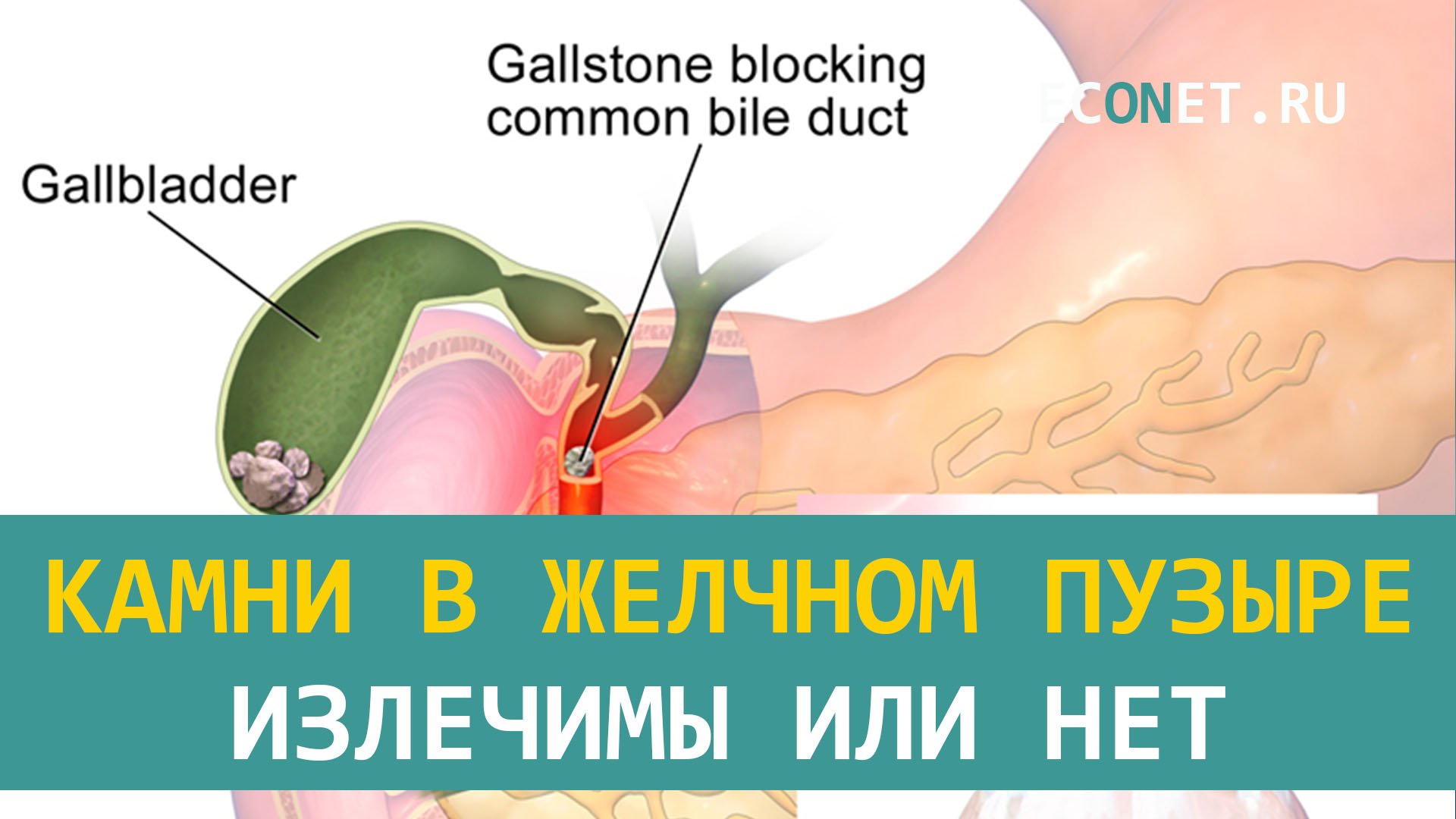 Surgeons say that gallstones are like a grenade that could explode at any moment. Gallstone disease is dangerous for its complications, including abscesses, peritonitis, pancreatitis, and even tumors. Is it necessary to remove the gallbladder for cholelithiasis – knows the answers to this and other important questions surgeon, head of the surgical department of St. Catherine’s Hospital Oleg Osipenko .
Surgeons say that gallstones are like a grenade that could explode at any moment. Gallstone disease is dangerous for its complications, including abscesses, peritonitis, pancreatitis, and even tumors. Is it necessary to remove the gallbladder for cholelithiasis – knows the answers to this and other important questions surgeon, head of the surgical department of St. Catherine’s Hospital Oleg Osipenko .
Oleg Vyacheslavovich, according to statistics, up to 15% of people in developed countries suffer from gallstone disease. Please tell us why this disease occurs, and who is at risk?
The causes of this disease are not known for certain. Various factors have been studied. This is a change in the chemical properties of bile: there is such a term – lithogenicity, these are various nutritional disorders. Pregnancy and the postpartum period contribute to the development of stones. Because intra-abdominal pressure rises and the mechanical outflow of bile worsens. At the same time, the lithogenicity of bile also changes due to the fact that the chemistry of the entire body system changes.
Because intra-abdominal pressure rises and the mechanical outflow of bile worsens. At the same time, the lithogenicity of bile also changes due to the fact that the chemistry of the entire body system changes.
And according to the statistics, who is more likely to fall into the risk zone – men or women?
No clear scientific evidence. Statistics show that women But I will say that men are just less likely to apply. At the first manifestations of pain and a feeling of heaviness in the hypochondrium, a woman will go and make herself an ultrasound. A man will pull to the last, anesthetize himself with pills. And already postoperative statistics show that women get sick more, at least in our country and in the European region.
Gallstones may not manifest themselves for a long time. How dangerous is this situation?
This is an imaginary well-being. What is it dangerous? Even if the stones did not manifest themselves in the form of acute inflammation, then this chronic inflammatory process definitely leads to oncological problems. Further. The biliary system is connected with the pancreas through the lymphatic and circulatory systems – they form a single hepatobiliary zone, and hence pancreatitis. Prolonged presence of stones can lead to bedsores in the gallbladder. These bedsores contribute to the penetration of stones outside the gallbladder – they cause fistulas. A fistula can form from the gallbladder with the intestines. This is fraught with a severe septic condition, abscesses. Also, one of the serious problems is the formation of a bedsore of the ductal system of the liver. Surgeons are well aware that this is the so-called Mirizzi syndrome, the problem is difficult to solve for the patient. All these are complicated forms of gallstone disease. And we must not forget that any stone carrier, if it does not manifest itself in the form of acute cholecystitis, in the future, as a rule, causes an oncological process.
Further. The biliary system is connected with the pancreas through the lymphatic and circulatory systems – they form a single hepatobiliary zone, and hence pancreatitis. Prolonged presence of stones can lead to bedsores in the gallbladder. These bedsores contribute to the penetration of stones outside the gallbladder – they cause fistulas. A fistula can form from the gallbladder with the intestines. This is fraught with a severe septic condition, abscesses. Also, one of the serious problems is the formation of a bedsore of the ductal system of the liver. Surgeons are well aware that this is the so-called Mirizzi syndrome, the problem is difficult to solve for the patient. All these are complicated forms of gallstone disease. And we must not forget that any stone carrier, if it does not manifest itself in the form of acute cholecystitis, in the future, as a rule, causes an oncological process.
What diagnostics of cholelithiasis does modern medicine offer – and in particular, the Clinic of St.
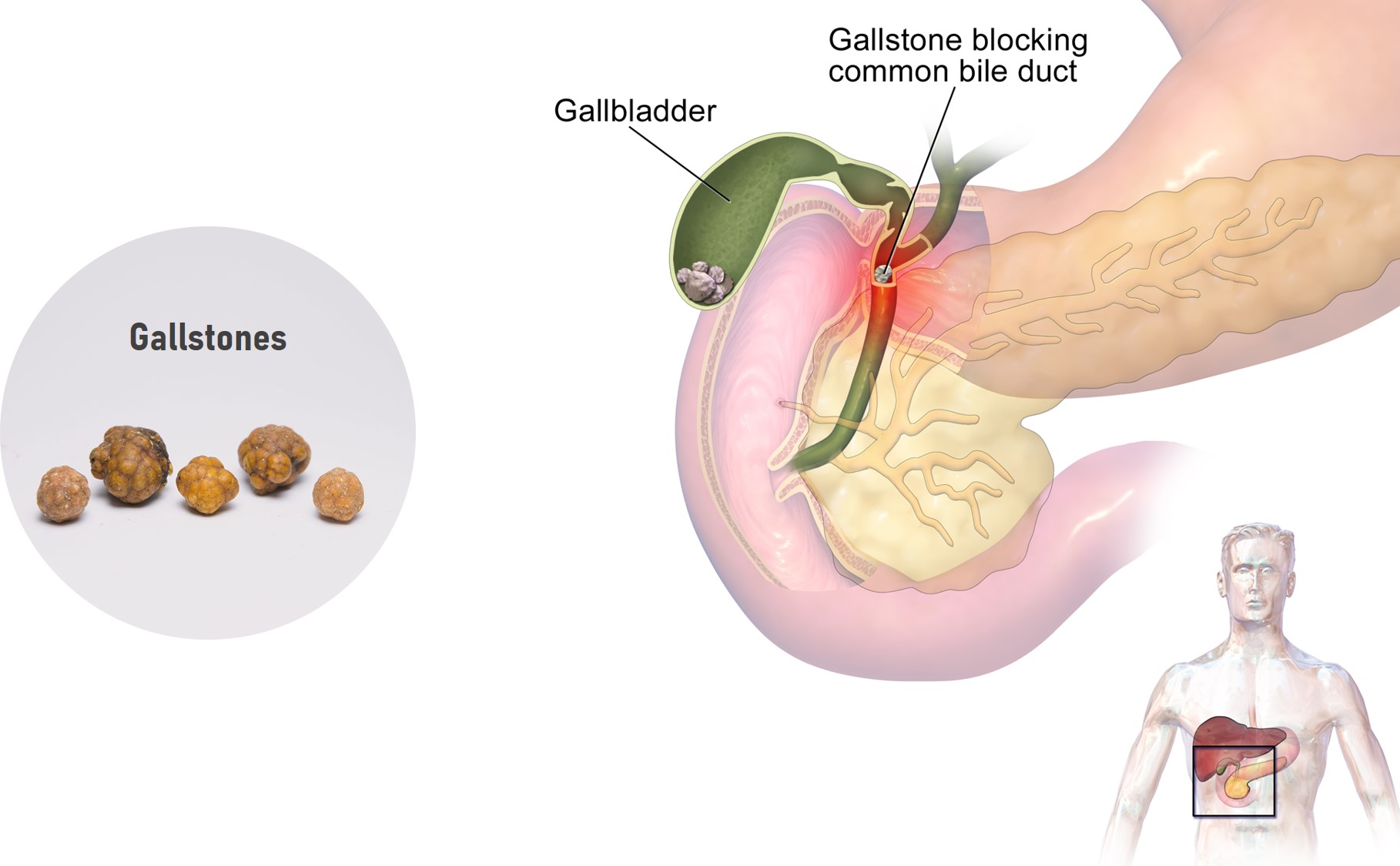 Catherine?
Catherine?
The gold standard for examination is ultrasound and magnetic resonance imaging. In our case, the Clinic has both methods of diagnosis. Plus, we have the opportunity to perform MRI cholangiography – this is a specific MRI study of the biliary system, which allows you to identify various inclusions to a level of less than 1 mm. Both tumor formations and calculi – micro choledocholithiasis, microcholelithiasis.
According to American researchers, a grain of 0.45 mm in size passing through the sphincter of the biliary system is enough for a 2-hour spasm of the sphincter system. As a result, there is a violation of the outflow of bile and pancreatic juice, pancreatitis develops.
MRI cholangiography is a broader method that allows you to dot the i’s. And ultrasound is the simplest method that does not require any intervention. The specialist simply holds the sensor at a certain angle and determines the presence of extensions in the system, the size of the gallbladder and the presence of stones in it.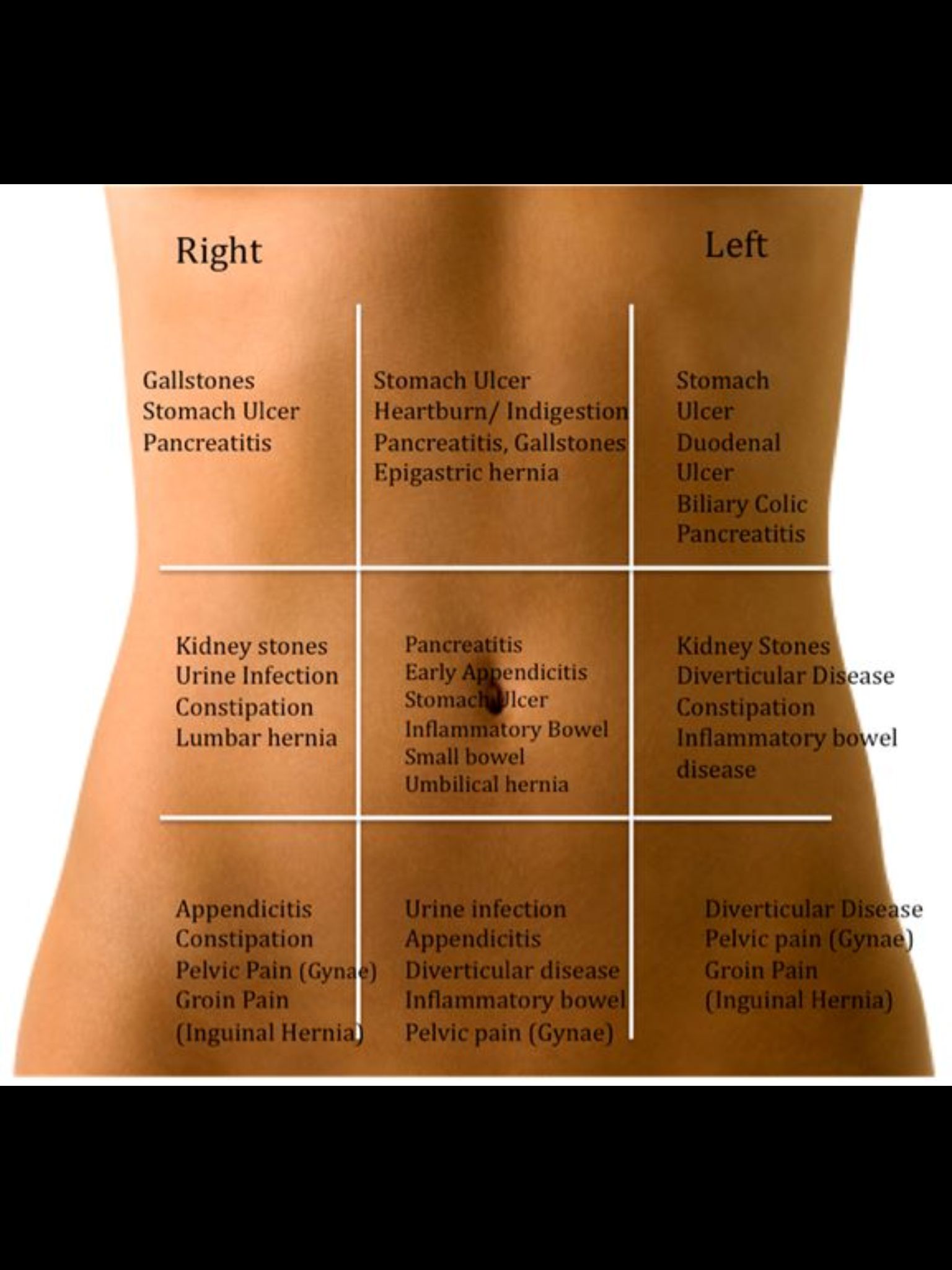
Ultrasound examination allows you to quickly determine the presence of extensions in the biliary system, the size of the gallbladder and the presence of calculi in it.
Can you talk about some obvious symptoms of this disease so that a person understands that there are problems?
The most basic is a feeling of bitterness in the mouth and heaviness in the right hypochondrium. Pain occurs when the calculi begin to move: they obturate, close the exit from the gallbladder or even cover it a little – and discomfort will already develop.
What are the treatments for cholelithiasis?
All treatments fall into two categories: conservative and surgical. There is no such drug that would dissolve gallstones, and we were 100% sure of the result. If it were so, surgery in this direction would not even develop. Of course, there are drugs that contribute to a change in the chemical composition of bile, its lithogenicity. They require long-term administration and are also specific to a certain type of stones. After all, stones can be of different chemical structures – it is almost impossible to find out with the help of analyzes.
After all, stones can be of different chemical structures – it is almost impossible to find out with the help of analyzes.
Surgical methods are the removal of the gallbladder. If you look at the history of the development of operations, then earlier they tried to simply remove stones from the gallbladder. But if the stones are removed and the gallbladder is sutured, even if the walls of the bladder are in good condition, firstly, this is fraught with failure of this wall, and secondly, the stones will necessarily form again. Stones never form in a working, functioning gallbladder.
We see different situations, different patients, with severe spinal injuries, who were in a coma and then for a long time, were immobilized for years – the gallbladder is functioning, and no calculi are found. And at the same time, we see that these stones are formed regardless of age and other circumstances. I had to operate on children, starting from the age of 8, already with large calculi. Now the age limits of this disease have expanded. If earlier it was said that this still happens in adulthood in people, now there is no such clear criterion. As practice shows, pregnancy, the postpartum period also contributes to the development and provokes the movement of stones.
Now the age limits of this disease have expanded. If earlier it was said that this still happens in adulthood in people, now there is no such clear criterion. As practice shows, pregnancy, the postpartum period also contributes to the development and provokes the movement of stones.
How does the absence of a gallbladder affect the human body?
I just said that stones never form in a working gallbladder. If stones have formed, the bubble does not work. The body, the nervous system has already turned it off. When there are calculi in it, it is excluded from the process of thickening and bile exchange. It is simply a source of chronic inflammation. Because, as in any ductal system – and the biliary tract is a ductal system, ascending infection depends on the flow rate. If even for 10-15 minutes to cause obstruction of the system, the infection tends to rise higher. So it is in this situation.
When the gallbladder is removed, does a person need to take some kind of medication all the time or does he just continue to live a normal life?
No, there is no need for this.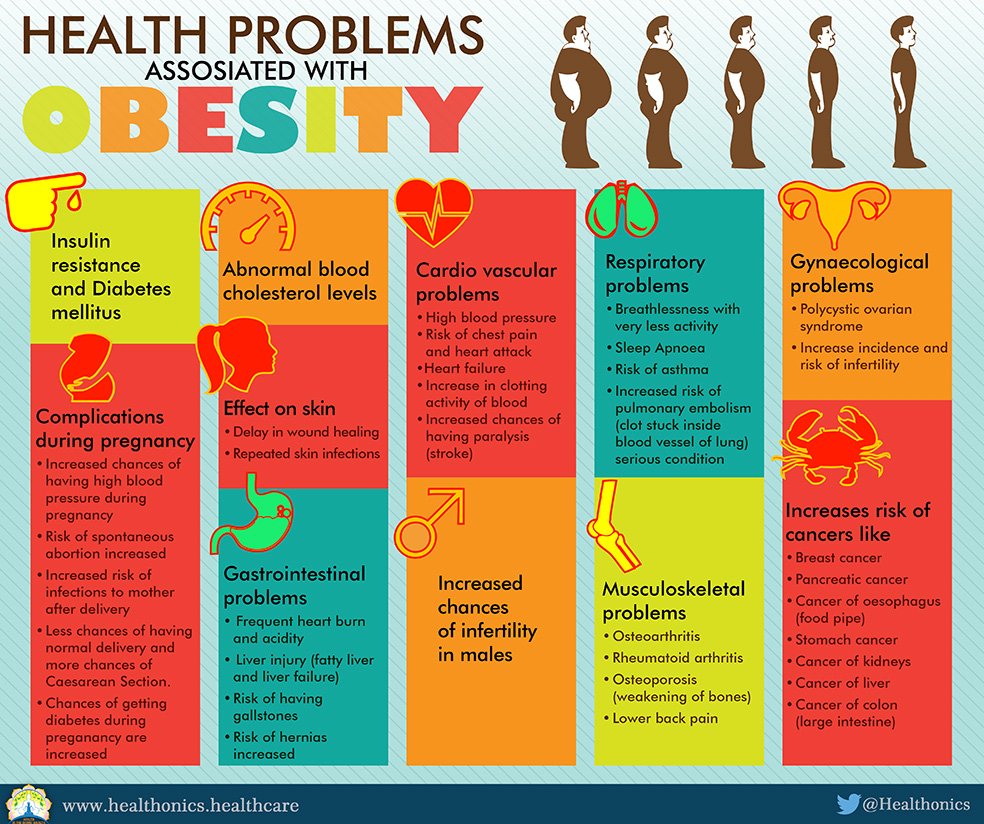 In the first two or three weeks, adaptation to the usual way of life occurs. Adults generally cannot drastically change the way they eat and live, because the body is already adapted to something. As for the gallbladder, practically a person returns to his normal, habitual way of life and lives absolutely adequately and qualitatively. In general, surgeons have a principle: the operation is performed in order to restore health, while the surgeon always strives to create a good quality of life.
In the first two or three weeks, adaptation to the usual way of life occurs. Adults generally cannot drastically change the way they eat and live, because the body is already adapted to something. As for the gallbladder, practically a person returns to his normal, habitual way of life and lives absolutely adequately and qualitatively. In general, surgeons have a principle: the operation is performed in order to restore health, while the surgeon always strives to create a good quality of life.
What should I do to detect even hints of cholelithiasis in my body as early as possible?
Be that as it may, a person always has a reason to see a family doctor. People are accustomed to making themselves a cardiogram. Similarly, it should become a habit to perform an ultrasound examination of the liver, gallbladder and bile ducts. A specialist who deals with ultrasound diagnostics will see inclusions – they are quite well visualized. The technology today is of a very high level, affordable. This is the only way not to bring yourself to symptoms, to manifestations. After all, what are symptoms? They mean that some changes are taking place in the body – a violation of the outflow or something else. Often, attacks of heart pain are associated with the biliary system. People go to the family doctor with pain in the heart, they are examined and, simultaneously with angina pectoris, cholelithiasis is found. With each attack of biliary colic, the pain component in the region of the heart intensifies. Here we found the connection. And all this is a diagnostic chain. Performing an ultrasound in this case is not difficult. And already a family doctor or a specialist doctor can use a more advanced method – cholangio-MRI to clarify some components.
This is the only way not to bring yourself to symptoms, to manifestations. After all, what are symptoms? They mean that some changes are taking place in the body – a violation of the outflow or something else. Often, attacks of heart pain are associated with the biliary system. People go to the family doctor with pain in the heart, they are examined and, simultaneously with angina pectoris, cholelithiasis is found. With each attack of biliary colic, the pain component in the region of the heart intensifies. Here we found the connection. And all this is a diagnostic chain. Performing an ultrasound in this case is not difficult. And already a family doctor or a specialist doctor can use a more advanced method – cholangio-MRI to clarify some components.
In St. Catherine’s Clinic, you can perform the most modern examination of the biliary system – MRI cholangiography.
This is a software-specific survey. Must be performed on a tomograph with a field strength of at least 1. 5 Tesla in order for it to give a good signal. What does it give? Visualization almost to the micro level, inclusions are visible less than a millimeter. With the help of cholangio-MRI, even the layers of the walls of the bile ducts can be differentiated. This was one of the conditions we had in the formation of the diagnostic service – the acquisition of such a program that gives the most accurate result. Today it is the world practice and the gold standard for examining the biliary system.
5 Tesla in order for it to give a good signal. What does it give? Visualization almost to the micro level, inclusions are visible less than a millimeter. With the help of cholangio-MRI, even the layers of the walls of the bile ducts can be differentiated. This was one of the conditions we had in the formation of the diagnostic service – the acquisition of such a program that gives the most accurate result. Today it is the world practice and the gold standard for examining the biliary system.
How to get rid of gallstones: effective treatments
Contents
- 1 Treating gallstones: effective methods and tips
- 1.1 How to get rid of gallstones
- 1.2 What is gallstones
- 1.3 Causes of gallstones
- 1.4 Symptoms of gallstones
- 1.5 Diagnosis of gallstones
- 1.6 Medical treatment of gallstones
- 1.7 Surgery for gallstones
- 1.7.1 When to operate
- 1.7.2 Types of surgery
- 1.
 8 Surgery for gallstones 9007 2
8 Surgery for gallstones 9007 2 - 1.9 Oral dissolution of gallstones
- 1.10 Folk methods of treating gallstones
- 1.10.1 1. Decoctions and infusions
- 1.10.2 2. Diet
- 1.10.3 3. Massage
- 1.11 Prevention of stone formation in the gallbladder
- 1.12 Conclusions
- 1.13 Related videos:
- 1.14 Q&A:
- 1.14.0.1 What are gallstones?
- 1.14.0.2 How do I know if I have gallstones?
- 1.14.0.3 What are the treatments for gallstones?
- 1.14.0.4 How can gallstones be avoided?
- 1.14.0.5 What food is not recommended in the presence of gallstones?
- 1.14.0.6 How long does it take to treat gallstones?
Find out about the treatment of gallstones. Surgery or conservative therapy? Read our article and find out what to choose in your case.
Gallstones are a serious disease that can lead to complications if not treated promptly and correctly.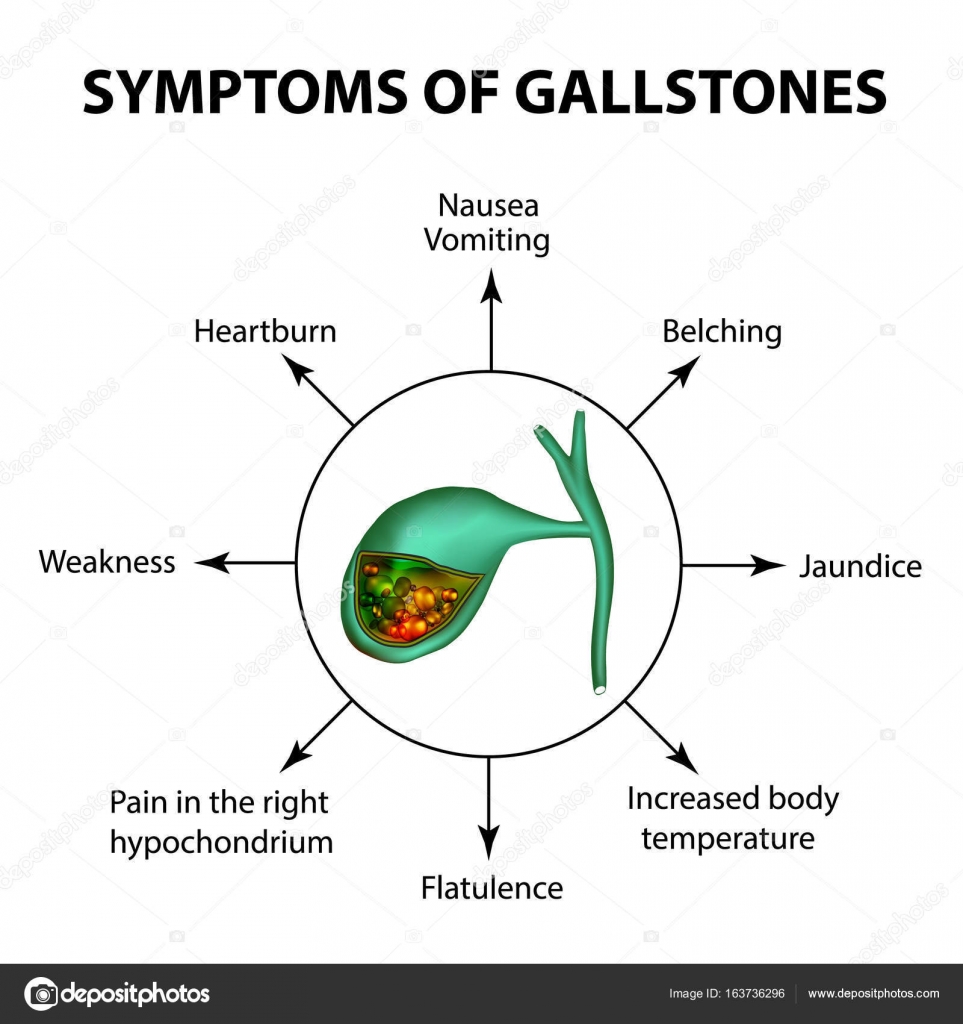 Among the reasons for the development of this disease may be an unhealthy lifestyle, a violation of the diet, as well as a genetic predisposition.
Among the reasons for the development of this disease may be an unhealthy lifestyle, a violation of the diet, as well as a genetic predisposition.
Unfortunately, gallstones often do not show signs, making diagnosis difficult and dangerous. The earlier the disease is detected, the greater the chance of curing and saving the patient’s life.
This article discusses effective methods for the treatment of gallstones. They will help get rid of the disease without surgery and contribute to the restoration of general health.
How to get rid of gallstones
Gallstones are hard formations that can form in the gallbladder due to an excess concentration of substances such as cholesterol or bilirubin. If you suffer from gallstones, you may need treatment to get rid of them.
There are several effective treatments for gallstones. In some cases, treatment may include surgical removal of the bladder. If surgical treatment is not necessary, then you can resort to the use of drugs.
- Medicines that dissolve gallstones can be an effective treatment. These drugs usually contain ursodeoxycholic acid or chenocholic acid.
- Vitamin C can be used to treat gallstones. This vitamin helps break up stones and promotes their removal from the body.
- Physical therapy can also help treat gallstones. Procedures such as ultrasound therapy and sausage massage can help break up and remove stones.
Regardless of the method of treatment, it is important to take care of your health and eat right. Avoid fatty and fried foods, increase the amount of dietary fiber in your diet, and exercise regularly to improve your overall health.
What are gallstones
The gallbladder is a small sac under the liver that stores bile, a fluid that helps digest fat in the intestines. Gallstones are hard formations formed inside the gallbladder from minerals, cholesterol, and other substances.
Some people can live with gallstones in their gallbladder without any symptoms, but for others the disease can cause severe pain. If a stone has started in the gallbladder duct, blocking the bile flow, it can lead to jaundice or infection.
If a stone has started in the gallbladder duct, blocking the bile flow, it can lead to jaundice or infection.
- About 80% of gallstones are cholesterol stones.
- Other types of stones – pigment stones.
Cholesterol stones are mainly solid formations of cholesterol that cannot be removed from the gallbladder. Pigment stones are formed from bile pigments or calcium, they can form due to hepatitis, cirrhosis of the liver or other diseases.
Causes of gallstones
The gallbladder is an important part of the digestive system and its main function is to store and secrete bile. Stones in the gallbladder are formed due to a violation of this function. One of the reasons for the formation of stones is the composition of bile. If the bile contains excess cholesterol, then it can crystallize, forming stones. In addition, stones can form due to the imbalance of chemical elements in bile, such as calcium and bilirubin.
Factors that may increase the risk of developing gallstones are absolute or relative deficiency of bile acids and prolonged fasting. Also, the occurrence of stones can be caused by hereditary predisposition, obesity, diabetes, metabolic disorders and age.
- Note: gallstones may be asymptomatic and found incidentally on examination, or they may cause severe pain and an urgent need to remove the stones soon.
Symptoms of gallstones
The main symptom of gallstones is a stabbing pain in the upper right abdomen. In this case, the pain can last for several hours, and can also be given to the right shoulder and shoulder blade. In some cases, pain may appear after eating fatty and heavy foods.
Another symptom is nausea and vomiting, especially after eating. The vomit may contain bile. Also, patients may experience pain during urination.
Additional symptoms may include bloating, heartburn and bitter taste in the mouth. Patients may also experience feelings of fatigue and depression.
Patients may also experience feelings of fatigue and depression.
Diagnosis of gallstones
It is necessary to pay attention to the symptoms that occur in the presence of gallstones. Usually, the first signs appear after eating fatty foods or during a period of severe stress. Pain in the right hypochondrium, nausea, vomiting are also possible.
It is important to see a doctor for a comprehensive examination. Of the diagnostic methods, ultrasound, MRI, CT can be distinguished. After receiving the result, the doctor will determine which methods of treatment should be applied in a particular case.
- Ultrasound is the most commonly used method for diagnosing gallstones. Does not cause pain, safe and effective.
- MRI and CT scans allow a more detailed examination of the state of the internal organs and determine the size and number of stones. They are more complex and expensive diagnostic methods.
Also, the doctor may prescribe additional tests, such as a complete blood count, to determine the presence of inflammatory processes in the body.
Correct diagnosis of gallstones is the basis for effective treatment and prevention of possible complications.
Medication for gallstones
Medication can help get rid of gallstones, especially when they are small. To do this, you can use drugs that help dissolve gallstones.
Henofalk may also be prescribed, which contains chenofalic acid, which also helps dissolve gallstones. This drug is used in the presence of stones up to 10 mm in size.
Some patients may also be given drugs that reduce the amount of bile acids in the bile, which reduces the risk of new stones forming. This can be Ursodez, which also contains ursodeoxycholic acid, or Chenodez, which contains chenodeoxycholic acid.
It should be noted that drug treatment can take a long time and does not always give a 100% guarantee for the complete elimination of stones. In addition, this method of treatment is not suitable for all patients, and is prescribed only after consulting a doctor and conducting the necessary studies.
Surgery for Gallstones
When to Operate
Although conservative treatments help to get rid of gallstones in many cases, some patients still need surgery.
The operation is possible if the stones are large enough or located in the channel that connects the gallbladder and liver.
If the stones cause acute pain, profuse gag reflex, fever and worsening of the patient’s general condition, surgery can also be life-saving.
Types of operations
Today, the current medicine offers several types of operations in the presence of gallstones.
- Laparoscopic stone removal is a more or less safe and effective method that is performed with a minimal incision in the abdominal cavity and almost does not put the patient on inpatient treatment.
- Cholecystectomy – complete removal of the gallbladder, if the stones are in too tangled position or for other reasons cannot be removed in other ways, then resort to this operation.
 Cholecystectomy may also be indicated when the patient has gangrene of the gallbladder or has a tumor in the area.
Cholecystectomy may also be indicated when the patient has gangrene of the gallbladder or has a tumor in the area.
In general, the decision on the need for surgery remains with the doctor, who will analyze all the indications and contraindications, and also determine which treatment method will be most effective in each specific case.
Gallbladder stone surgery
Although gallbladder removal is the standard treatment for gallstones today, some surgical procedures can help preserve the organ, but only when the stones are in the bile duct.
Laparoscopic cholecystectomy is a method in which a landmark is removed using a small incision in the abdomen and one small camera to carry out the operation. This procedure is a less traumatic laparotomy, which means less risk of complications and faster recovery.
As with any operation, complications are possible after gallbladder removal. There is a small risk of infection, bleeding, and breathing problems. However, in general, most people recover quickly and lead normal lives.
However, in general, most people recover quickly and lead normal lives.
Oral dissolution of gallstones
Oral dissolution is a treatment for gallstone disease that uses a drug that can break down gallstones inside the gallbladder.
The main active ingredient of these drugs are bile acids, which react with stones to form soluble salts. After that, the stones gradually dissociate and are excreted from the body naturally.
Oral dissolution is a non-surgical treatment that avoids gallbladder surgery. However, this method has its limitations and may not be suitable for all patients with gallstone disease.
- Oral dissolution is most effective at the stage of stone formation and in the presence of small stones less than 1 cm.
Before starting treatment with oral dissolution, it is necessary to conduct a comprehensive examination and consultation with a specialist who will select the most effective therapy and control the state of health during treatment.
Folk methods for treating gallstones
1. Decoctions and infusions
One of the most popular folk methods for treating gallstones is taking decoctions and infusions of various plants and herbs. Among the most popular ingredients are chamomile, mint, St. John’s wort, wild rose, sea buckthorn, corn stigmas, etc.
To prepare a decoction or infusion, you need to take 1-2 tablespoons of dry herbs, pour a glass of boiling water and let it brew for 15-20 minutes. This amount of drink should be divided into three doses and drunk before meals.
2. Diet
If you have gallstones, you need to review your diet and follow a special diet. It is not recommended to consume fatty, fried, spicy and salty foods, as well as alcohol.
Instead, you should increase your intake of vegetables and fruits, protein products (meat, fish, cottage cheese), dairy products and green tea.
3. Massage
Abdominal massage is also considered quite an effective folk remedy in the treatment of gallstones.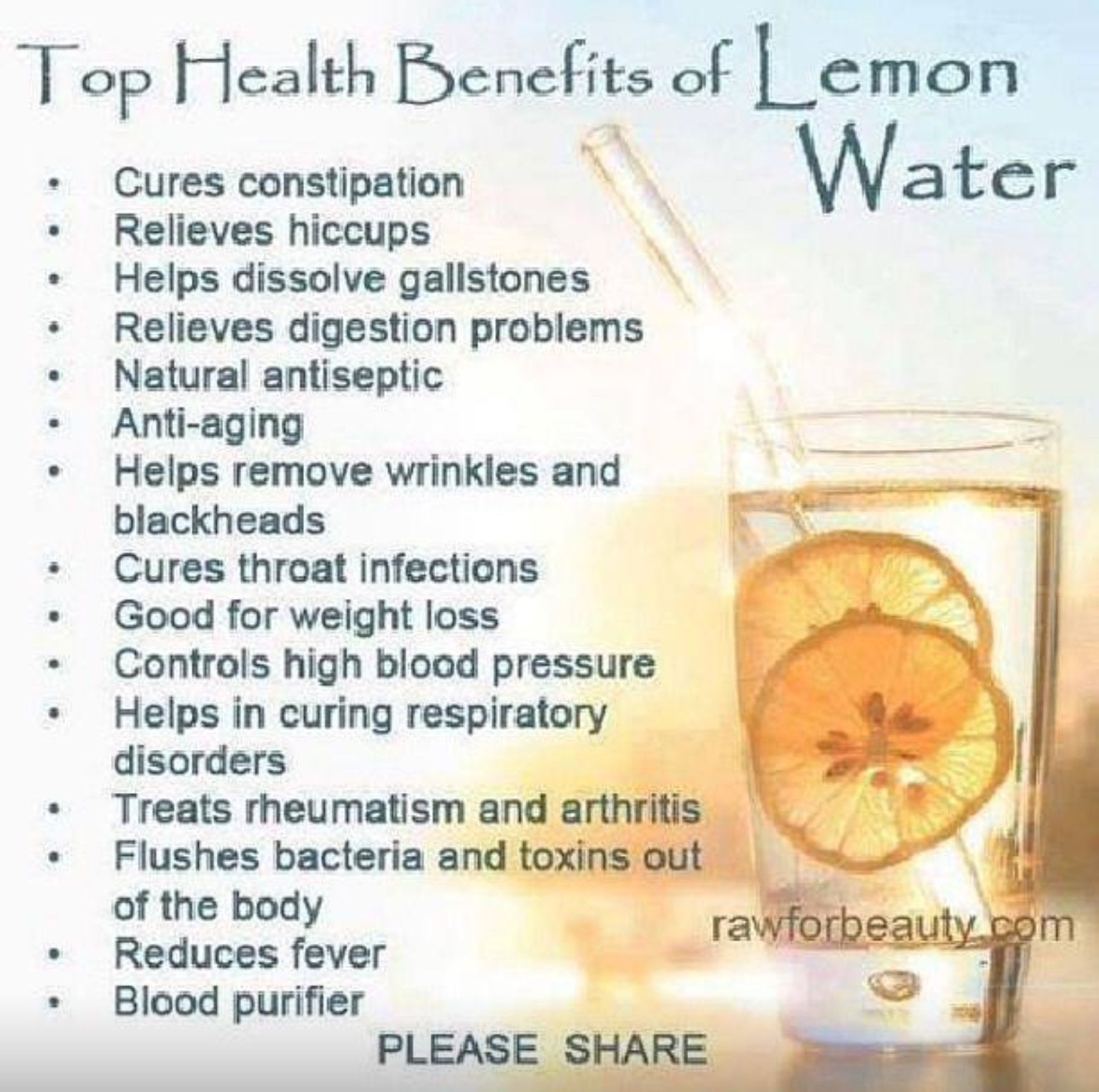 To do this, lie on your back, bend your knees and press them to your stomach.
To do this, lie on your back, bend your knees and press them to your stomach.
Next, you need to press on the right side of the abdomen and make circular movements, moving clockwise. Massage should be done daily for at least 20-30 minutes.
Prevention of gallstones
Gallstones are formed due to a malfunction of the digestive system. It is important to adjust the diet to avoid this problem.
- Maintain a healthy diet. Eat often, but in small portions. Eliminate fatty, fried, spicy and smoked foods from your diet. Eat more fruits, vegetables and greens.
- Watch your weight. Excess weight puts additional stress on the digestive system and can lead to the formation of gallstones.
- Increase fluid intake. Water helps to remove toxins from the body and improves digestion.
- Go in for sports. Regular exercise helps improve metabolism and strengthen the immune system.
If you have already encountered the problem of gallstone formation, it is recommended that you first consult a doctor in order to avoid complications and choose the best course of treatment.
Conclusions
Gallstone removal should only be done under medical supervision. Self-treatment can lead to worsening of the condition and the development of complications.
Medicines that help break down stones and improve the gastrointestinal tract should only be prescribed by a physician.
Surgery may be required when stones have become large or have resulted in acute biliary obstruction.
After successful treatment, it is necessary to monitor your lifestyle, avoiding excessive consumption of fatty, fried and spicy foods, as well as leading to a decrease in immunity and stress.
Related videos:
Q&A:
What are gallstones?
Gallstones are small hard formations that can form from bile. They can be of different sizes and composition, depending on the reasons for their formation.
How do I know if I have gallstones?
Symptoms of gallstones may include pain in the right upper quadrant of the abdomen, nausea, vomiting, mustard taste in the mouth, and others. To find out for sure, you need to conduct a diagnosis with a doctor.
What are the treatments for gallstones?
There are various treatments for gallstones, including drug therapy, lithotripsy, endoscopic removal through the common bile duct, and surgical removal of the gallbladder.
How can gallstones be avoided?
To avoid the formation of gallstones, it is recommended to follow a healthy lifestyle, including a proper diet rich in fruits and vegetables, low-fat food and limiting animal fats, regular physical activity, avoiding excessive alcohol consumption, not smoking.
What food is not recommended in the presence of gallstones?
In the presence of gallstones, it is not recommended to consume fatty, fried, spicy foods, alcohol, strong coffee, chocolate and other foods that can provoke pain attacks.


 This means they make several small cuts (incisions) in the belly instead of one large incision (open surgery). Surgeons insert a thin, lighted tube with a camera and their surgical instruments through these small incisions. Then they snip the gallbladder free and remove it through one of the openings.
This means they make several small cuts (incisions) in the belly instead of one large incision (open surgery). Surgeons insert a thin, lighted tube with a camera and their surgical instruments through these small incisions. Then they snip the gallbladder free and remove it through one of the openings.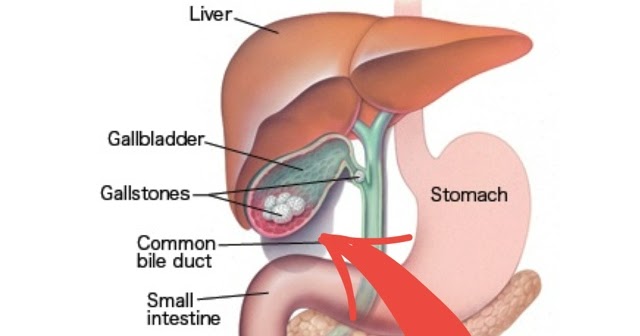 If the study does show gallstones in the main bile duct, the surgeon will try to remove them. Because the bile ducts of children are usually very small, this can be very difficult to do using laparoscopic techniques.
If the study does show gallstones in the main bile duct, the surgeon will try to remove them. Because the bile ducts of children are usually very small, this can be very difficult to do using laparoscopic techniques. Once your child is home, you may need to limit activity for several days.
Once your child is home, you may need to limit activity for several days.
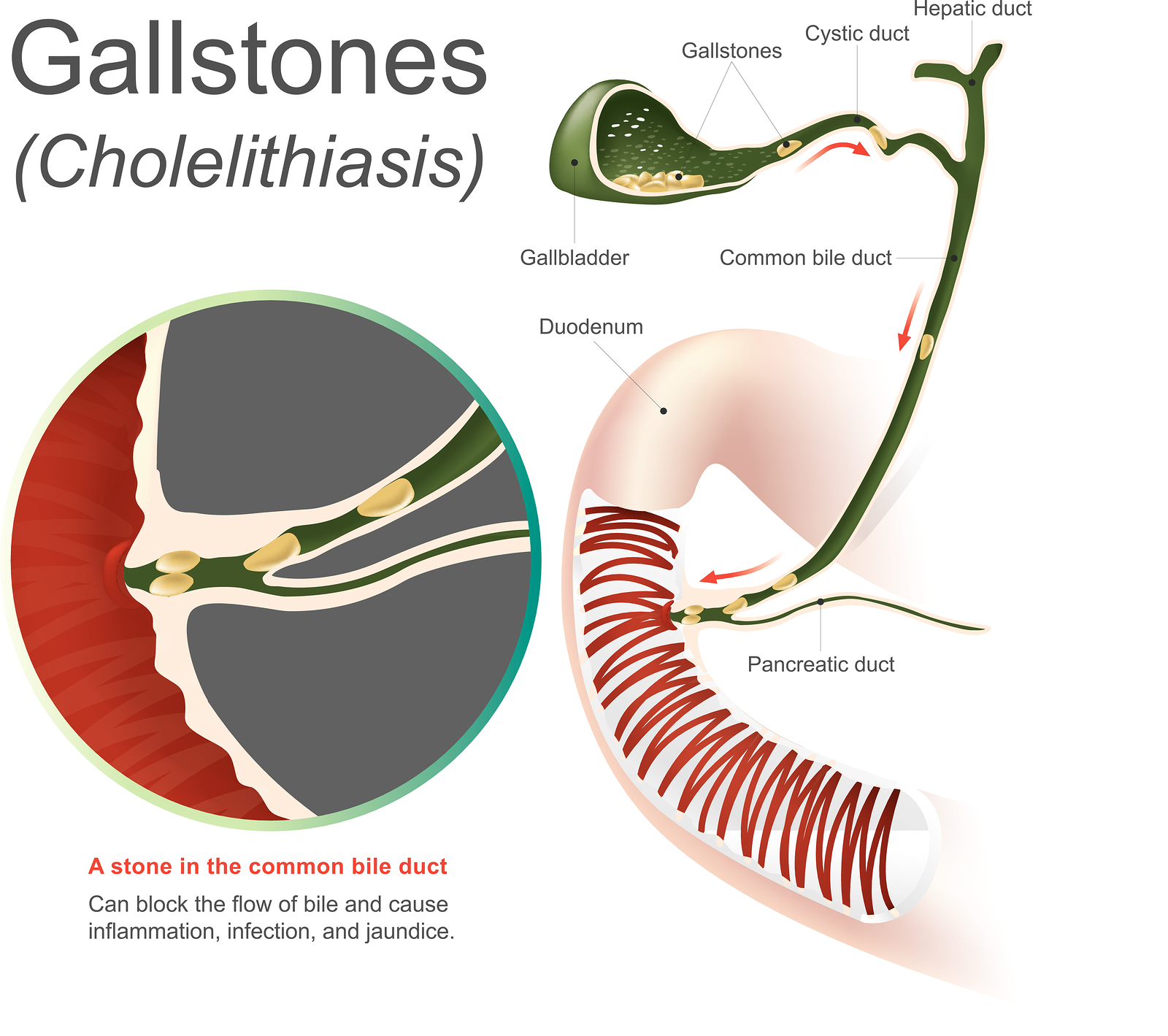 8 Surgery for gallstones 9007 2
8 Surgery for gallstones 9007 2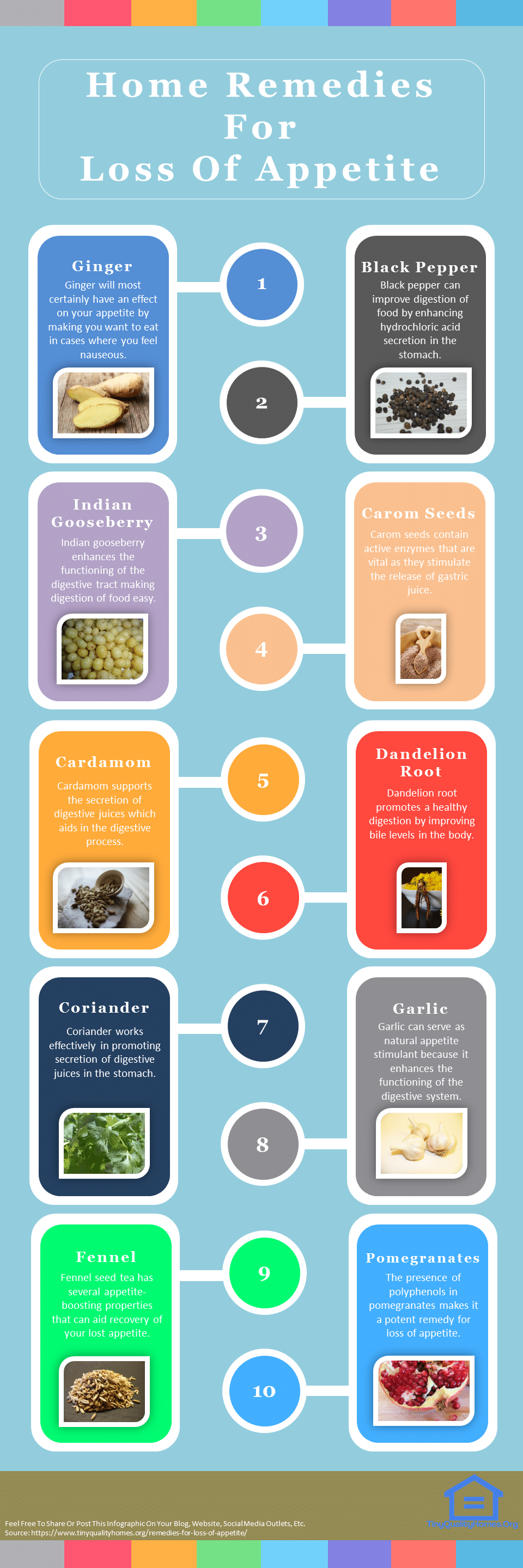 Cholecystectomy may also be indicated when the patient has gangrene of the gallbladder or has a tumor in the area.
Cholecystectomy may also be indicated when the patient has gangrene of the gallbladder or has a tumor in the area.